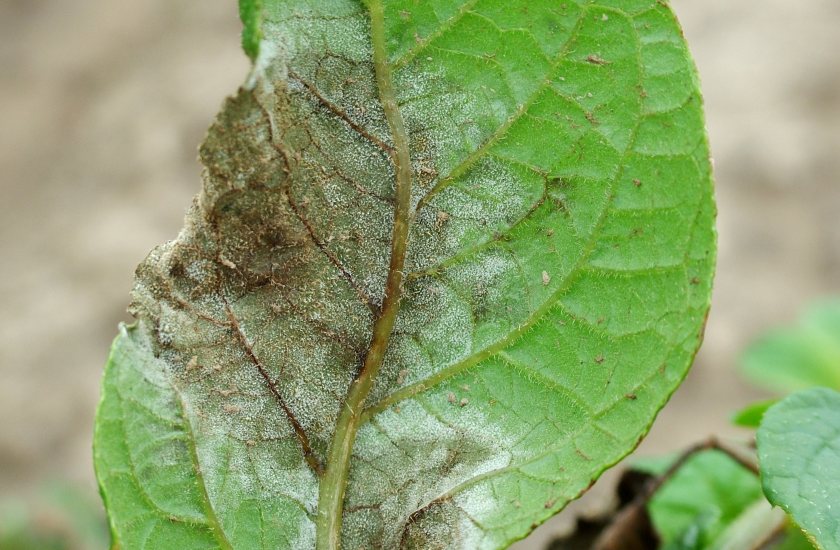
Another unseasonably dry spring may have reduced early blight risk so far, but growers have been warned of the prevalence of new aggressive strains.
This year has started very dry with low blight risk, but it could quickly turn into a big blight year, according to agronomy firm Hutchinsons.
It said much can be learned from the 2021 season, which saw many crops carrying significant loading of potato blight, even where the best chemistry was used.
The weather was a key factor in this turnaround, but it also coincided with an increase in the EU_36_A2 blight strain.
This strain, according to monitoring by the AHDB, was prevalent across all but western England last year and dominated infections in eastern counties.
Data from crop protection firm Belchim suggests EU_36_A2 has the ability to produce many more spores in a wider range of weather conditions than strains that have previously dominated UK blight populations, such as EU_13_A2 or EU_6_A1.
Another strain, EU_37_A2 has a similar capacity to 36_A2, and is also resistant to fluazinam, however, confirmed infections have declined with a reduction in the amount of fluazinam used across the industry, leaving it now largely confined to the West and North.
Hutchinsons root crop technical manager, Darryl Shailes said: “EU_36_A2 is also outcompeting it, which is common in the epidemics of recent seasons, when one strain tends to dominate field infection with very little mixture of genotypes being identified.”
However, he points out that last season’s AHDB monitoring did show an increase in the number of “other” genotypes found in Scotland, suggesting there may be some new, as yet unidentified strains being created by genetic recombination.
Mr Shailes urged growers to consider the changing nature of blight infections when putting together control strategies through the season, particularly as crops go through rapid canopy expansion to full canopy.
“In trials we always see the weakest programmes have the weakest start and cannot be brought back with very robust treatments later in the season.
"In recent seasons the epidemic has tended to be early in the season when crops are approaching full canopy.”
The strongest option with good systemic activity to protect rapidly growing canopies is benthiavalicarb + oxathiapiprolin, he explained.
Using it for the third or fourth blight spray, or earlier if necessary, is generally an effective timing, and in high risk situations, he recommended reducing the spray interval to seven days from the more normal 10.
However, as with any fungicide programme, Mr Shailes said product stewardship was vital, so growers should use a range of different actives and alternate modes of action throughout the season.
